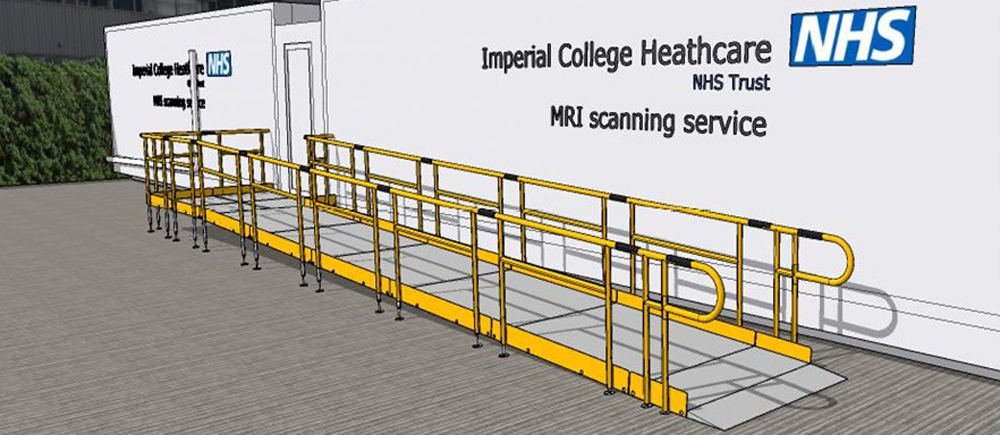As our wants, needs and behaviours are forced to change with the integration of new considerations into our daily lives, will offsite construction play a greater role in delivering the built environment we need whilst simultaneously keeping a workforce as safe as it can possibly be? Joe Bradbury discusses:
How many politicians does it take to change a lightbulb? Just one, it seems. All they need do is hold it in place while the world revolves around them. Whilst politicians play with people’s lives and livelihoods, the construction sector attempts to soldier on, accounting for 6% of Britain’s economic output and providing employment for 2.3 million people, according to official figures from the ONS.
However, as CIOB rightly pointed out in a recent research paper entitled ‘The Real Face of Construction 2020’, this figure does not take into account the work of architects, engineers and quantity surveyors as well as manufacturers dedicated to the sector and many other firms that support construction, such as builders’ merchants and plant hire providers.
Needless to say, construction matters… and in a rapidly changing modern world, our construction methods matter more than ever. What role will offsite construction play in Covid world? Let’s take a look:

Social distancing and less time on site
As most offsite construction work is carried out offsite, there is a reduced assembly time on site with fewer tradesmen required. Offsite construction is considerably quicker than traditional on-site methods. As such, sites are measurably quieter than traditional construction sites with fewer people needing to be there to carry out works.
A recent study carried out by the Steel Construction Institute on a 4-storey residential building estimated that the total amount of site labour could be reduced by as much as 75% through the use of offsite construction – an obvious benefit to the local residents in terms of the general level of site activity and the number of vehicles travelling to and from the site, but also a clear advantage to anybody trying to navigate the ever-changing Covid restrictions and guidelines that serve to prevent us from delivering the homes this country so sorely needs.

Controlled build environment
Even before we awoke from the Brexit dream into a Coronavirus nightmare, transferring much of the construction programme from an open site to a controlled factory environment was proven to reduce on-site time for workers and reduces the potential for site-based accidents and ill health. Now, at a time when it is widely considered necessary to keep people apart, this seems more advantageous to any builder attempting to run a business at this complicated time.
Factory controlled conditions mean a better quality of build; better finish; fewer defects; all snagging complete and all services tested. These advantages are matched by those for the skilled workforce who are carrying out the work – a warm, controlled and enclosed workplace where their health and safety can be observed properly, significantly reducing the risk of accidents, ill-health or exposure to a flu virus.

Housing shortage
The UK finds itself in the midst of an acute housing crisis. Current annual construction levels are typically less than half of the estimated 250,000 new homes this country needs built every year through to at least the 2030s. With only 63% of projects delivered on time and only 49% delivered to budget, it’s clear to see that traditional building practices, whilst still integral, are falling short of meeting major challenges on their own.
There is an urgent need for a mass volume of houses to be constructed in a limited time scale and whether the state takes on housebuilding, or if it is left to private house builders, the benefits of offsite construction could be crucial to meeting targets that have repeatedly been missed. Offsite construction provides housebuilders with programme certainty and quality though simplification of site operations and reduced weather dependencies due to the controlled factory-based assembly process. Houses delivered through offsite construction offer enhanced specification standards and build quality which reduces occupancy costs related to energy use, defects and repairs. There is significant evidence that suggests that the use of offsite construction has been successful when applied to meet the needs of significant housing developments at scale with consequential opportunities for standardisation of design details – particularly to meet the need of government led programmes.
Offsite housing construction looks set to grow in a post-pandemic world. Demand is expected to be driven by several contributing factors; mainly by the ongoing shortage of homes across Britain and the declining numbers of key skilled tradesmen and professionals, which in turn increases demand in offsite housing manufacturing and output capacity.
Key areas of demand are likely to be where there is an urgency to increase the rate of completions, such as affordable housing and Build-to-Rent.

The environment still matters… more than ever!
Covid-aside, we need to reduce our impact on the planet as a species fast… otherwise, there will not be a platform for all of our opinions, actions and debates to take place upon. I would argue that this is the one truth that we can all agree on.
The built environment contributes around 40% of the UK’s total carbon footprint. Despite erratic annual variations, the carbon footprint of the built environment has reduced since 1990, but we still have a considerable way to go. Newly constructed buildings are more energy efficient, but 80% of buildings that will be in use in the year 2050 have already been built today, so a major priority will be decarbonising our existing stock through modern construction technology.
Builders are now rightly expected to create sustainable and energy efficient buildings as part of the greater effort to reduce CO2 emissions, energy consumption and waste as an industry. As such, environmental considerations will transform how our buildings are constructed, what materials are used and which methods are employed.
Offsite construction is far less energy intensive than traditional housebuilding methods. The carbon footprint left by the many construction vehicles and machinery on the site of a traditional construction project alone is considerably larger than that of modular construction. Put simply, fewer vehicles involved and less time spent on site results in less greenhouse gases being released into our environment.

In summary
Although Covid-19 and the subsequent clumsy government responses around the globe has caused untold devastation to our mental health, our lives and our economies, it also hit pause for a brief few moments on an unsustainable model, affording us an offset perspective on our habits as a species.
It would be a shame if all that was taken from it was pain and destruction. Times of difficulty are also times of great learning.
We all heard beautiful stories in the beginning of city smog clearing to reveal clear blue skies over capital cities around the world. The pandemic shone a light on our need for change.
With this in mind, a transition to a low-carbon economy presents our industry with great opportunities for growth, something we will need to focus on to recuperate some of the economic damages inflicted upon us by rash decisions and a coronavirus bill.
Environmental considerations, will transform how our buildings are constructed, what materials are used and the methods employed. The world is changing and the time is right for the construction industry to embrace innovative technology and offsite techniques to develop better buildings at a rapid rate to enhance lives, minimise the environmental impact and reduce energy costs for occupants for many years to come.






